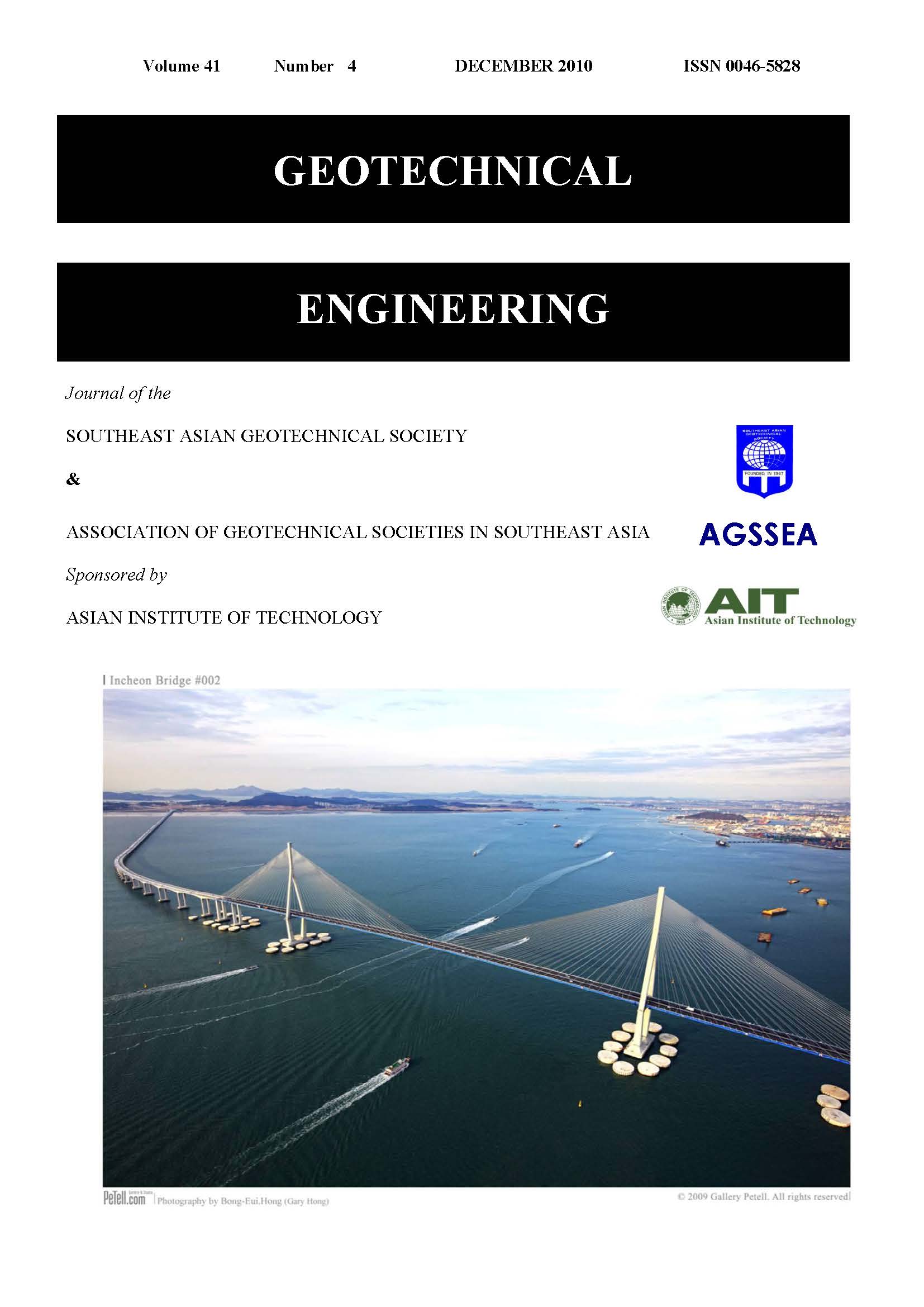Engineering Protocols for the Assessment of the Net Moisture Flux at the Ground Surface
Main Article Content
Abstract
The assessment of moisture flux boundary conditions at the ground surface has proved to be important for the analysis of “real world” geotechnical engineering problem. There are several components that must be quantified in order to determine the net moisture flux entering the soil at the ground surface including: precipitation, runoff, actual evaporation and transpiration. Preferred methodologies are becoming apparent for calculating each of the components that lead to the calculation of the net moisture flux at the ground surface. The purpose of this paper is to set out general engineering protocols for the assessment of the net moisture flux at the ground surface. Examples are presented to illustrate the applications of moisture flux at the ground surface for geotechnical engineering problem; the examples include: i.) movement of slabs built on grade or at shallow depths below ground surface, ii.) triggering of slope instability as a results of water infiltration, and iii.) design and performance of soil cover systems.
Article Details

This work is licensed under a Creative Commons Attribution-NonCommercial-NoDerivatives 4.0 International License.
Copyright © 2019 Association of Geotechnical Societies in Southeast Asia (AGSSEA) - Southeast Asian Geotechnical Society (SEAGS).


